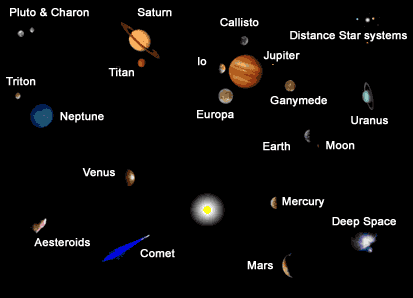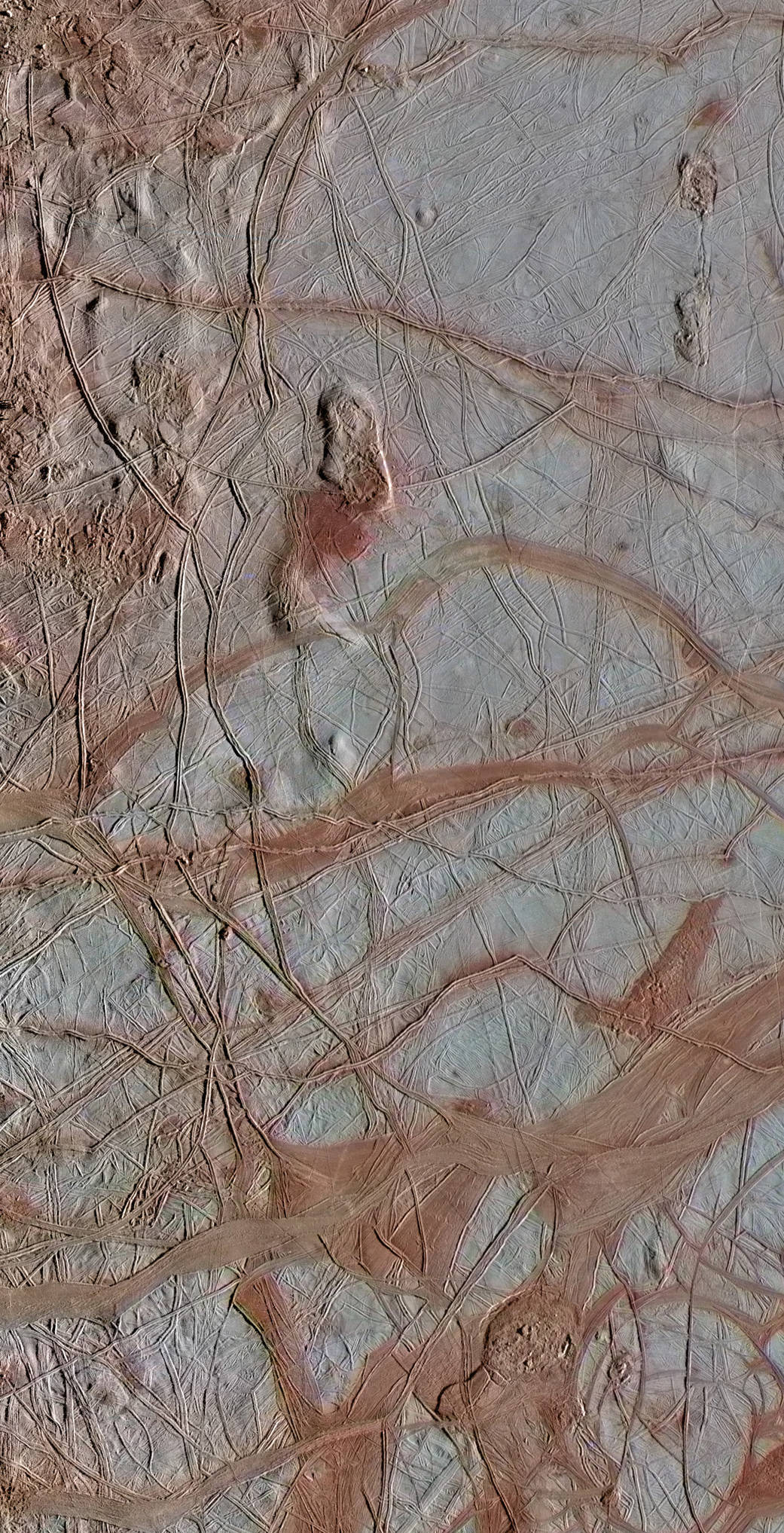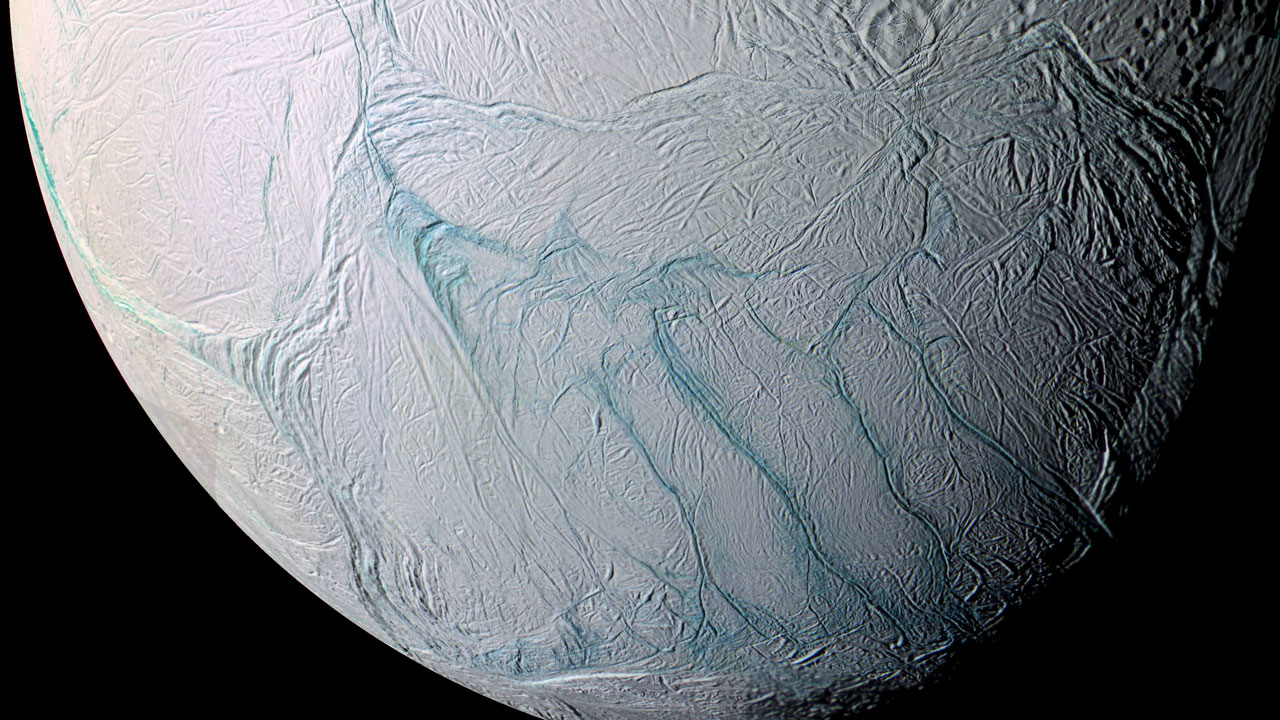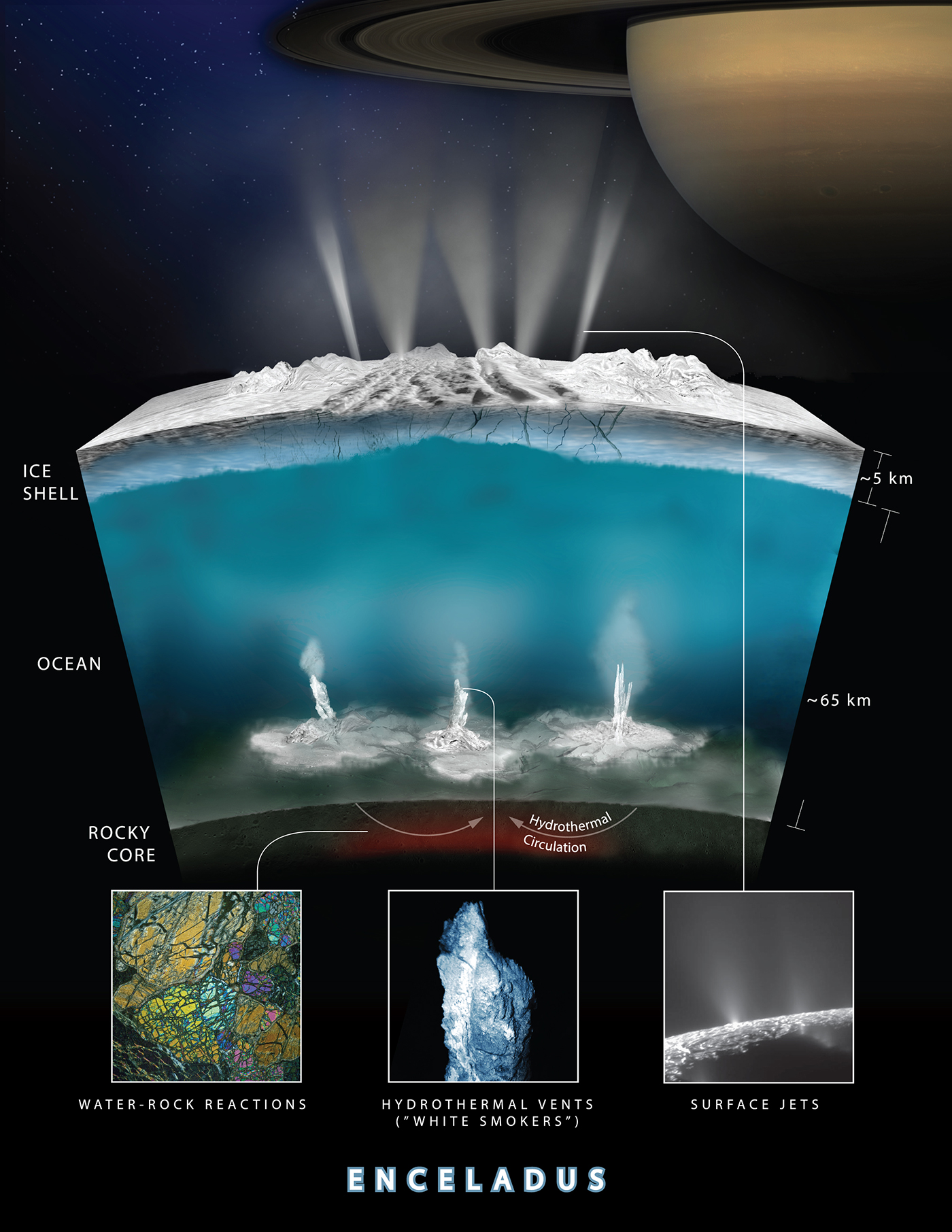(Are There Two Habitable Zones in Planetary Systems?) |

|
(Are There Two Habitable Zones in Planetary Systems?) |

|
But now some of the places that were previously considered the least likely to hold life have turned out to be perhaps some of the most likely to provide habitable environments. Moons of Jupiter and Saturn that were thought to be cold and frozen for eons are now known to be geologically active. Io is the most volcanically active body known in the Solar System. At least three other Galilean moons, Europa, Ganymede, and Callisto, and the Saturnian moon, Europa, appear to have extensive subsurface oceans. On the surface, they are all ice worlds with no atmospheres to speak of, but below, they are ocean worlds.
And, finally, there's Titan, the largest moon of Saturn with its rain, rivers, lakes and seas made of liquid methane rather than water. Who would have thought that we would find so many places for LAWKI in the outer Solar System? We look at the three moons, Europa, Enceladus, and Titan in a bit more detail.
Click on the picture of Europa to the right to see a video on the
ocean worlds of our
Solar System. Start around 1:18 for a discussion of the Jovian moons.
| 
|
 |
Ever since the film 2001: A Space Odyssey first came out, Europa has been the subject of fascination. A small, icy moon orbiting Jupiter its depiction as an inhabited world beneath its ice crust was a foreshadowing of the upcoming Voyager and Galileo results. Voyager and Galileo gave us our real close-up looks of this intriguing place.
How is this possible? If there are liquid oceans, there must be a source of heat to keep Europa's water liquid. Europa is too far from the Sun for Solar heating to work, it is too small for it to retain heat from its formation for 4.6 billion years, and too small to contain enough radioactive elements to keep its interior warm.
Gravitational tugging from Jupiter and its other
Galilean moons
provides the heat needed to haves oceans rather solid layers
of ice on Europa, much as the
gravitational forcing on Io leads to
its warm interior and extensive vulcanism. As a consequence of the
tidally heated interior of Europa
|
left image is true color, right is enhanced to show features on surface
|
Are There Surface Features and Other Evidence that Point to the Existence of Hydrothermal Vents and Perhaps LAWKI?
|

|
|
 |
 |
Today, Earth's deep-sea hydrothermal vents support rich communities of life, ecosystems powered by chemical energy rather than sunlight. "Some of the most primitive metabolic pathways utilized by microbes in these environments involve the reduction of carbon dioxide CO2 with H2 to form methane CH4 by a process known as methanogenesis (Seewald 2016),
The detection of H2 and CO2 in the plumes suggests methanogenesis may be happening deep beneath Enceladus's icy shell. "Indeed, the observed H2 levels indicate that a lot of chemical energy is potentially available in the ocean," Glein said. "It's quite a bit larger than the minimum energy required to support methanogenesis," he said. Glein stressed, however, that nobody knows whether such reactions are actually occurring on Enceladus. "This is not a detection of life," Glein said. "It increases the habitability, but I would never suggest that this makes Enceladus more or less likely to have life itself. I think the only way to answer that question is, we need data." Seewald also cautioned on an astrobiological interpretation noting that H2 is rare in Earth's seawater, because hungry microbes quickly gobble it up. "Is the presence of H2 an indicator for the absence of life, or is it a reflection of the very different geochemical environment and associated ecosystems on Enceladus?" Seewald wrote. "We still have a long way to go in our understanding of processes regulating the exchange of mass and heat across geological interfaces that define the internal structure of Enceladus and other ice-covered planetary bodies."





|

|
Titan, the largest moon of Saturn is even more interesting in some ways. It is perpetually shrouded in a thick smoggy atmosphere of 98.4 % nitrogen, 1.4 % methane, and (0.1-0.2) % hydrogen. Consequently, its surface had never been visible until Cassini and its small lander probe Huygens , first looked below the smog and clouds. Titan is like an eerily alien version of Earth, surface pressure 1.5 atm with rain, rivers, lakes and seas, but being far too cold for liquid water, T ~ -180 C (not much heat here), its water cycle may be composed of liquid methane/ethane. | |||
|
|||
Appearance-wise, the surface and geology look amazingly Earth-like, but the conditions are uniquely Titan. For that reason, it has long been considered that the chances of any kind of life existing here are remote at best. | |||
| |||
|
|